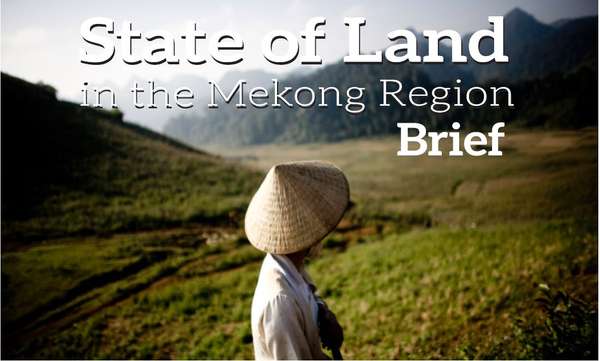State of Land in the Mekong Region - Brief
Published
2019-12-02
Excerpt: The Mekong region lies at the intersection of Southeast, East and South Asia, between two Asian giants: China and India. It comprises five countries that host the bulk of the Mekong river watershed: Cambodia, Lao PDR, Myanmar, Thailand and Vietnam. The Mekong region is exceptional for its social and ecological richness. Home to 237 million people, the region includes 329 ethnic groups speaking 410 distinct languages, making the region one of the most ethnically-diverse in the world. The Mekong is also a global biodiversity hotspot, with a high degree of ecological and agricultural diversity.
The Mekong region has undergone rapid socio-economic growth over the past two decades alongside pronounced transformations in a number of key sectors. These changes have significantly altered relations between the rural majority and increasingly-affluent urban centres. Land—as both a foundation for national development and the livelihoods of millions of rural and agricultural communities—continues to play a central role in the Mekong region. In all five countries, smallholder farmers play a crucial role in the development of the agricultural sector and, through it, food security and economic growth. However, rural communities are being increasingly swept up into regional and global processes within which they are not always well-positioned to compete. Worse, they are often undermined by national policies that fail to ensure their rights or enable them to reap potential benefits.
Understanding the changing role and contribution of land to development is critical to inform policy, planning and practices toward a more sustainable future. The State of Land in the Mekong Region aims to contribute to a much-needed conversation between all stakeholders by bringing together data and information to identify and describe the key issues and processes revolving around land, serving as a basis for constructive dialogue and collaborative decision-making. The State of Land in the Mekong Region is structured around five domains: (1) the land-dependent people of the Mekong, including dynamics of rurality, agricultural employment and the on-going structural processes of demographic and agrarian transition; (2) the land resource base upon which this population depends, including land use and land cover, agricultural conditions and change, and the region’s natural capital; (3) the ways in which this land resource base is distributed across society, including smallholdings, large-scale land investments and other designations; (4) the security of land tenure, which depends on how land rights are recognized and formalized, and; (5) the conditions of governance and land administration that shape access to and control over land resources, including issues of transparency, equity, the rule-of-law and access to justice. The State of Land in the Mekong Region is framed by a number of key indicators within each domain and presents these on two levels. At the regional-level, it presents a comparative analysis of key indicators between the Mekong countries and an examination of transboundary process that shape and define land issues, including regional trade and investment flows in the land and agricultural sectors. At the country-level, data and information on key indicators are disaggregated and examined to identify country-specific conditions and trajectories of change.
This brief was published in ECHO Asia Notes Issue #40 along with many excellent resources from the Asia Agriculture & Community Development Conference, a Research Update on Heavy Metal Uptake in Tire Garden Planters and many other opportunities. [ Download AN #40 ]
This article is a brief snapshot of the full-length publication, just recently published and made available. The full-length book can be found and downloaded free online at the Mekong Region Land Governance (MRLG) website, and we would encourage you to take advantage of this great resource.